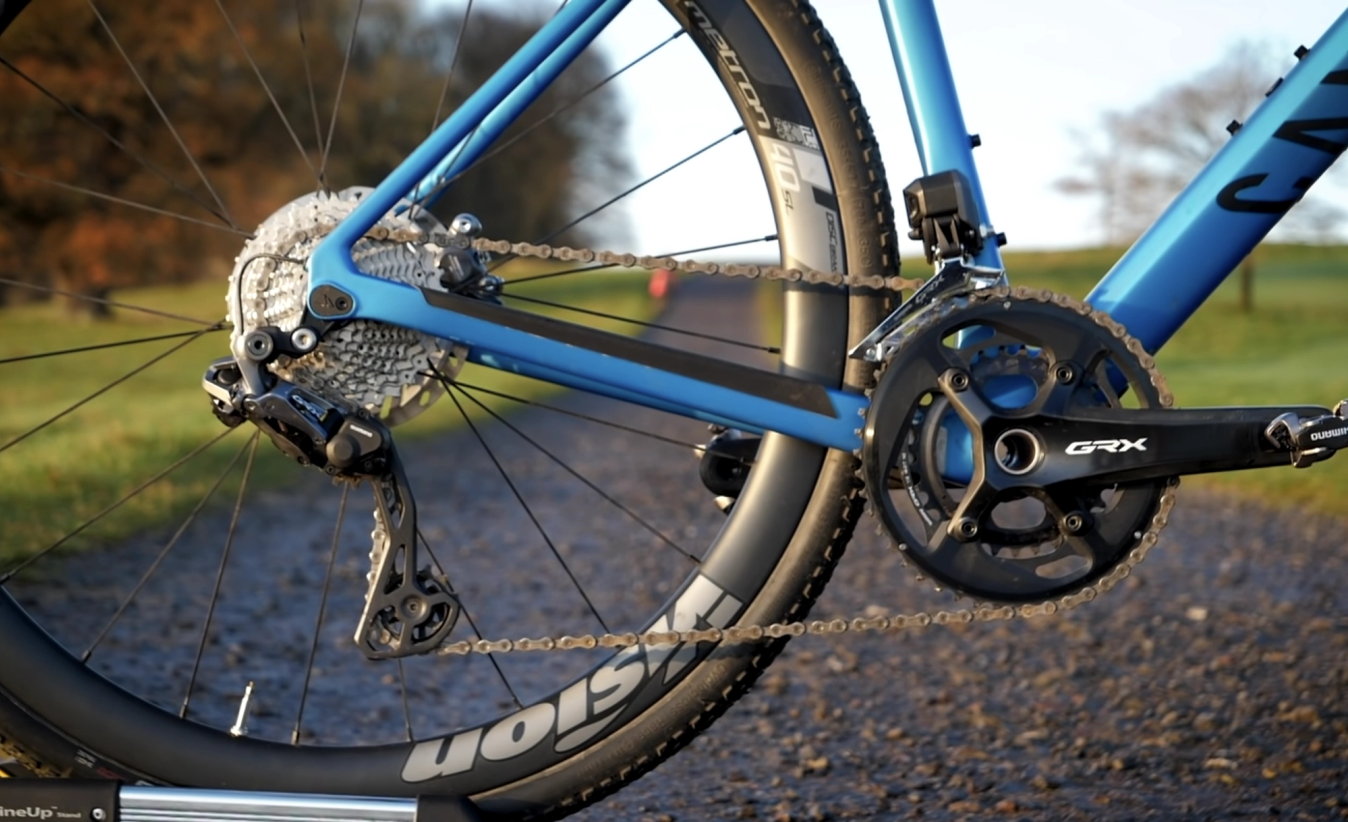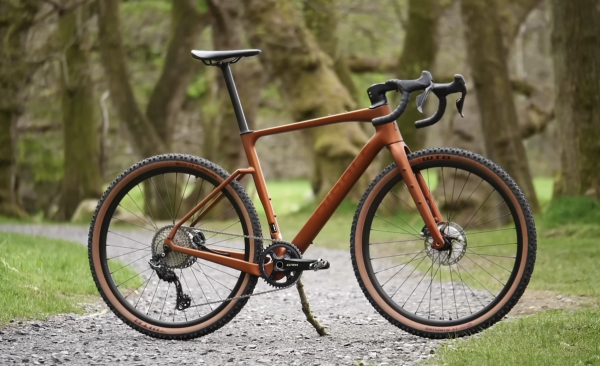1x vs 2x groupsets: which is best for your gravel bike?
Wondering about the pros and cons of single or double chainrings? Here’s how to choose between 1x and 2x on your gravel bike.
James Howell-Jones
Junior Writer
If you’re in the market for a gravel bike, you’re going to be faced with a decision: do you want one chainring (1x) or two (2x)? Each of these options comes with its own advantages and disadvantages, and there’s no one-size-fits-all answer as to which is best. Making the right choice is about thinking about where you ride, and what you use your gravel bike for.
Read more:
What kind of riding do you do?
If you’re not interested in the technical differences between the two options, and just want to know what’s best for you, you mainly just need to consider what kind of riding you do most.
2x drivetrains are the best solution for riders who want their gravel bikes to double up as a road bike, or gravel riders who spend a lot of time on tarmac. Equally, those of us who ride a lot of fast, smooth-rolling gravel roads will benefit from a 2x drivetrain. This is because 2x drivetrains have smaller gaps between the gears, and they’re a tiny bit more efficient.
1x drivetrains are best for riders who want to use their gravel bikes for off-roading, exploring, and having fun. They’re simpler, they’re better for rough terrain and technical riding, and they allow for wider tyres.
If you want to get into the actual differences between the two, read on.
How do 2x drivetrains work?

© GCN
2x drivetrains have two front chainrings and a close-range cassette
2x drivetrains have two chainrings on the crankset and a front derailleur to guide the chain between the two. They are paired with a close-range cassette on the back wheel, with only a few teeth difference between each of the cogs in the sprocket. In combination with the two chainrings on the front, this gives a wide range of gears with small gaps between each one.
Gravel specific drivetrains will feature drivetrains with a clutch mechanism, regardless of whether they’re 1x or 2x. A clutch is a device within the derailleur that adds extra resistance, locking the chain in place and making it less likely you’ll drop a chain. As well as keeping the chain on, this clutch mechanism stops the chain bouncing around on rough terrain, so the bike remains quiet, without any chain slap sounds or any damage to the paint on your chainstay.
How do 1x drivetrains work?

© GCN
1x drivetrains have a single chainring and a wide-range cassette
1x drivetrains have just one chainring on the crankset. To give a similar range of gears to a 2x, the single chainring is paired with a much larger cassette, with bigger gaps between the gears. Since there’s no need to change gear on the front chainring, the chainring teeth are taller and more secure. Most 1x chainrings use a ‘narrow-wide’ chainring that meshes closely with the plates of the chain. This, in combination with the clutch mechanism, makes it very unlikely that you’ll drop your chain on a 1x setup, even over rough terrain.
The advantages of 2x
1. Close range gears

© GCN
2x drivetrains use cassettes with smaller jumps between gears
The main advantage of a 2x drivetrain is the smaller gaps between the gears. For pedalling on road, or pedalling quickly, this gives you the ability to fine tune your cadence and means that you can keep pedalling at a comfortable RPM no matter what speed you’re riding at. Changing between gears gives less of a jump, so you won’t interrupt your flow when you switch between gears. For gravel racing, riding on tarmac, or riding in a group, this is ideal.
2. Minor efficiency benefit
A less significant advantage to a 2x drivetrain, but one that will make a difference for racers or performance cyclists, is the minor efficiency advantages of 2x. In a controlled test between 1x and 2x drivetrains performed by Ceramic Speed and VeloNews in 2019, a Shimano 2x drivetrain was more efficient than a SRAM 1x drivetrain at every gear ratio. Across the range, the 2x drivetrain was just over 1% more efficient, with a fairly significant 6W saving when riding in the highest gear at 250W.
The advantages of 1x
1. Only a handful fewer gears
On the face of it, 1x drivetrains have half the gear range of a 2x setup, but in reality, it's not the case. Since some of the gears on a 2x setup overlap, covering the same ratio twice, and since some are inaccessible due to cross chaining, a 2x11 drivetrain has about 14 usable gears, in practice. Moving down to 11 or 12 with a 1x setup, then only means missing out on three or four gears.
2. Simplicity
1x drivetrains are simpler to use, simpler to install and maintain, and mechanically simpler – there’s fewer parts there to break or go wrong on a 1x setup, and fewer parts adding to the weight of the system. With a 1x drivetrain, you can lose a chainring, the front derailleur, a cable and housing, and a shifter. This means fitting and indexing your gears is a far simpler job, and you’ve got five components less to worry about when you’re out on the trails or servicing your bike.
Changing gear with a 1x is far simpler. You don’t have to worry about cross chaining or being in the right chainring, it’s simply a case of choosing between easier and harder. For new cyclists, that’s so much easier to get the hang of. And even for experienced riders, the simpler interface can be a blessing when you’re focussing on riding technical terrain.
3. Less restrictive for frame design
One of the biggest advantages of 1x drivetrains is that they allow frame designers far more freedom when designing bikes. There’s no need for the seat tube to sit in the right position for a front derailleur mounting, and the smaller, narrower profile of a single chainring leaves room for wider tyres.
4. Better on rough terrain

© GCN
Narrow-wide chainring teeth mesh closely with the chain
1x drivetrains are quieter and more secure over rough terrain due to the tall, ‘narrow-wide’ chainring teeth and the clutch mechanism on the rear derailleur. For riders who are looking to take on really rough terrain, 1x is the better option.
5. Frees up the left shifter for a dropper post
Finally, 1x drivetrains free up the left shifter, which can be used to actuate a dropper seatpost. Again, for gravel riders who are looking to take on technical or rough terrain, this is a big advantage. It’s possible to have a dropper post with a 2x drivetrain, but it has to be actuated with a third level on the bars, which is less neat.
Which should you choose?
To choose between 1x and 2x, you have to take your riding style and terrain into account. For riders looking to go fast, ride tarmac or ride in a race or fast group, the 2x option might be the best choice. Those smaller gaps between the gears are going to help for long pedalling sections, and it’s nice to know that you’re saving a few watts of efficiency over your 1x riding buddies.
For riders who want their gravel bike to be more of an exploration-mobile, 1x is the winner. It’s simpler to fit, maintain and use, and it gives you the ability to squeeze in chunkier tyres for the rough stuff.
Ultimately, your decision between 1x and 2x isn’t going to make or break your gravel riding experience. There are cases when 1x is better, and there are cases when 2x is better, but gravel bikes are famed for their versatility, and neither option will hold you back out on the roads and trails.











